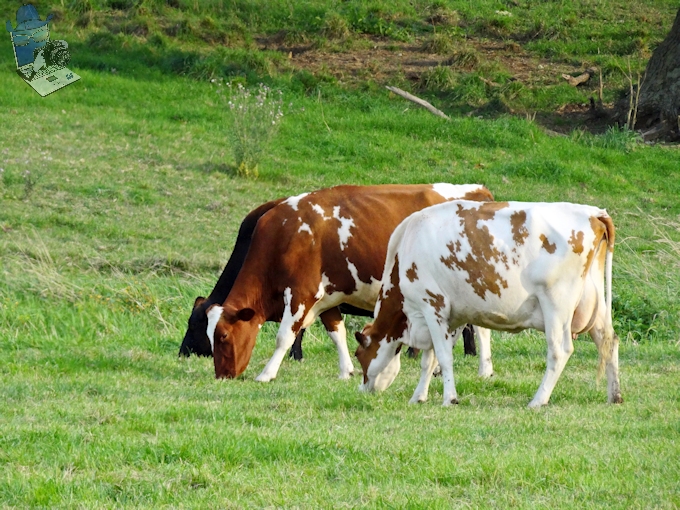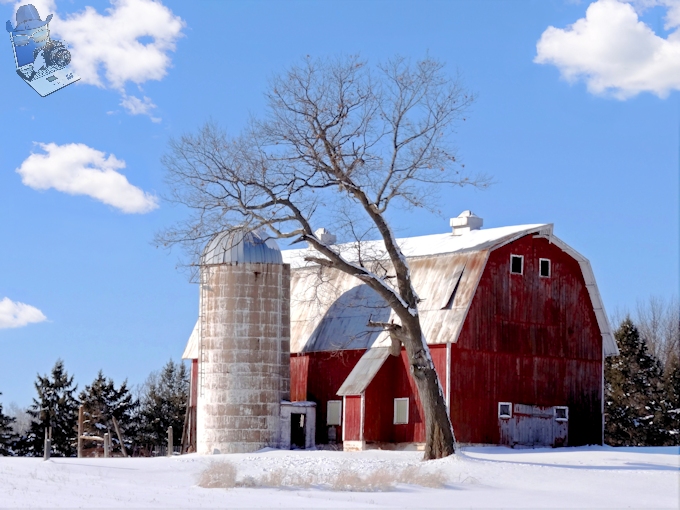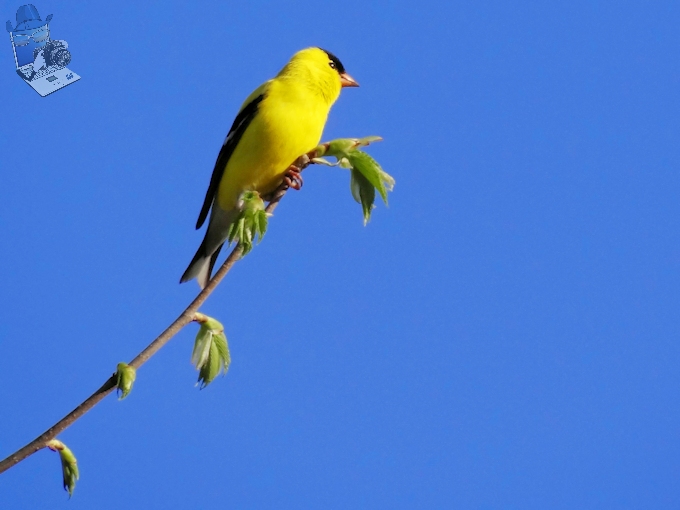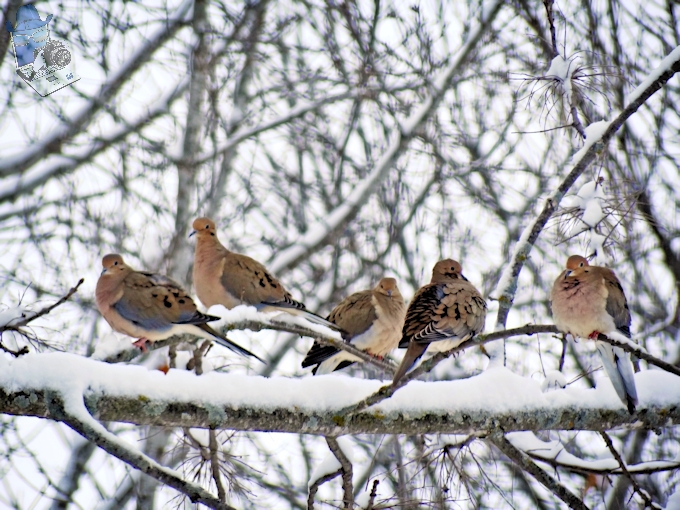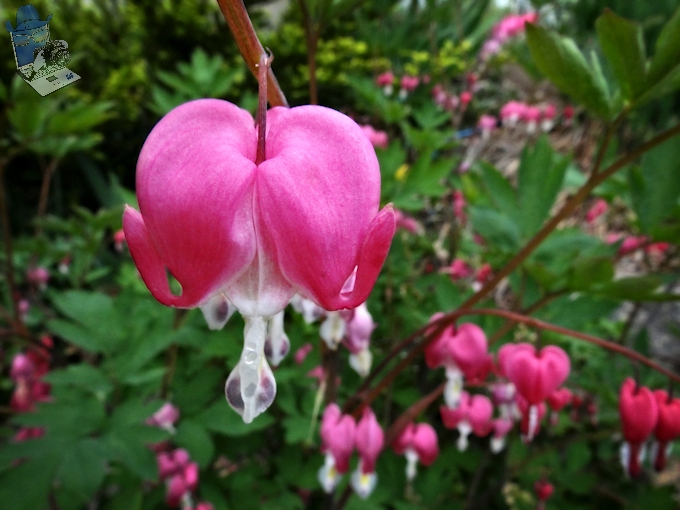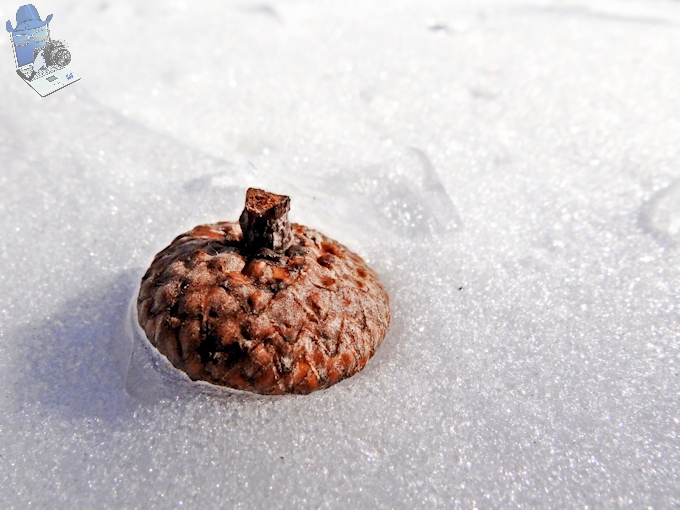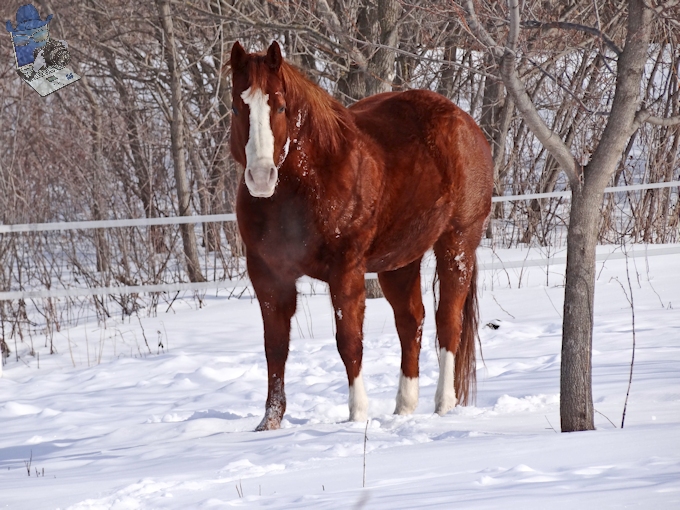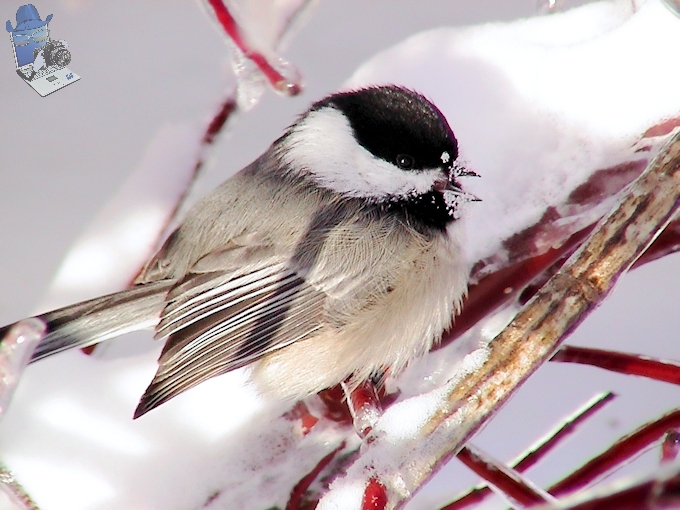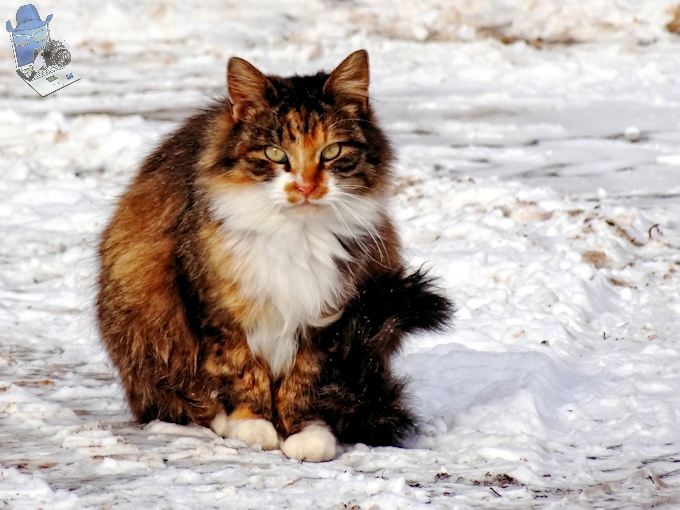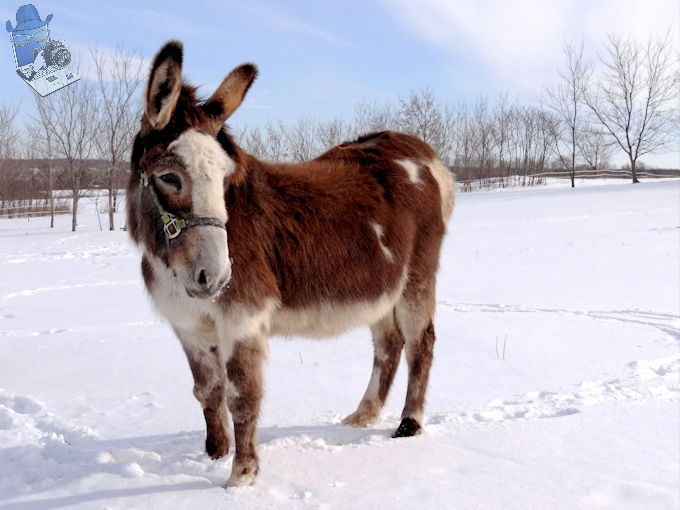Many people have the day off for Presidents’ Day but I’m celebrating a different event. February 18 is also the Elm Farm Ollie Day which the National Mustard Museum in Middleton, Wisconsin celebrates every year. They even have a three mustard set as tribute to the three most famous cows in history — Elm Farm Ollie, Mrs. O’Leary’s Cow, and the Cow That Jumped Over the Moon. The mustard connection? According to their web site, “Here in Wisconsin, we have a saying: ‘A cow who cuts the mustard is a cow who can be trusted.'”
Who is Elm Farm Ollie? Elm Farm Ollie (known as “Nellie Jay” and post-flight as “Sky Queen”) was the first cow to fly in an airplane, doing so on February 18, 1930, as part of the International Air Exposition in St. Louis, Missouri, United States. The two year old Guernsey cow was also the first cow to be milked in flight in the Ford Tri-Motor airplane. Wisconsin native Elsworth W. Bunce milked her, becoming the first man to milk a cow mid-flight.
Elm Farm Ollie’s milk was sealed into paper cartons which were parachuted to spectators below. Charles Lindbergh reportedly received a glass of the milk. Ollie’s stunt proved so popular that a large crowd, apparently thirsty for milk, gathered on the field where her plane was to land, forcing it to be diverted to another site.
In addition to having her praises sung in such works as “The Bovine Cantata in B-Flat Major” (from Madame Butterfat) and the stirring “Owed to Ollie,” she has been the subject of stories, cartoons and poems. E. D. Thalinger even painted her portrait for posterity.
So grab your glass of milk (or the jar of mustard) and raise a toast to Ollie.
Celebrating Elm Farm Ollie Day


